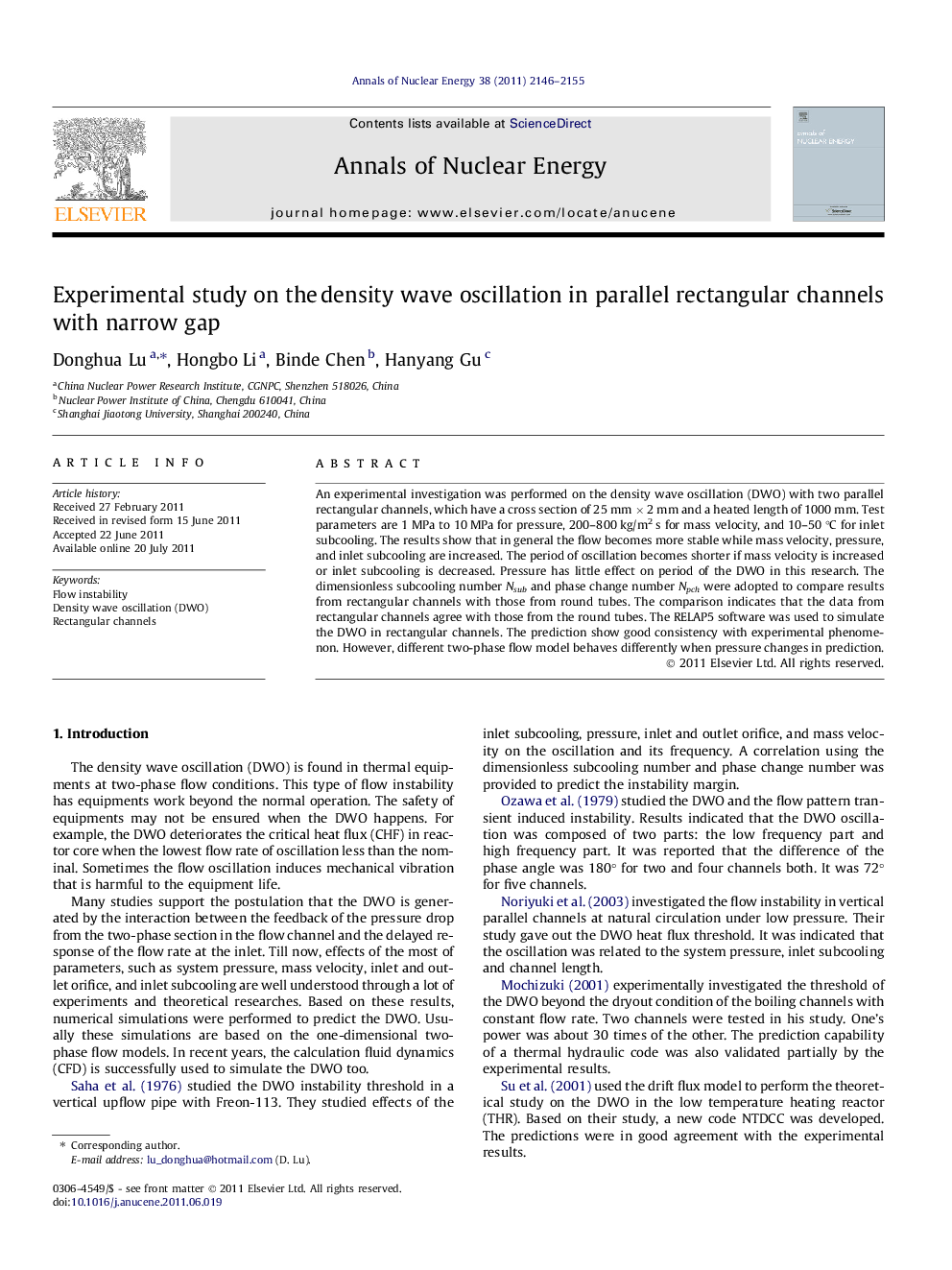| Article ID | Journal | Published Year | Pages | File Type |
|---|---|---|---|---|
| 1729204 | Annals of Nuclear Energy | 2011 | 10 Pages |
An experimental investigation was performed on the density wave oscillation (DWO) with two parallel rectangular channels, which have a cross section of 25 mm × 2 mm and a heated length of 1000 mm. Test parameters are 1 MPa to 10 MPa for pressure, 200–800 kg/m2 s for mass velocity, and 10–50 °C for inlet subcooling. The results show that in general the flow becomes more stable while mass velocity, pressure, and inlet subcooling are increased. The period of oscillation becomes shorter if mass velocity is increased or inlet subcooling is decreased. Pressure has little effect on period of the DWO in this research. The dimensionless subcooling number Nsub and phase change number Npch were adopted to compare results from rectangular channels with those from round tubes. The comparison indicates that the data from rectangular channels agree with those from the round tubes. The RELAP5 software was used to simulate the DWO in rectangular channels. The prediction show good consistency with experimental phenomenon. However, different two-phase flow model behaves differently when pressure changes in prediction.
► The flow channel is a rectangular channel with narrow gap. It is seldom to be experimentally investigated. ► The pressure range is wide from 1 MPa to 10 MPa. ► Both single channel and double channels were tested.
